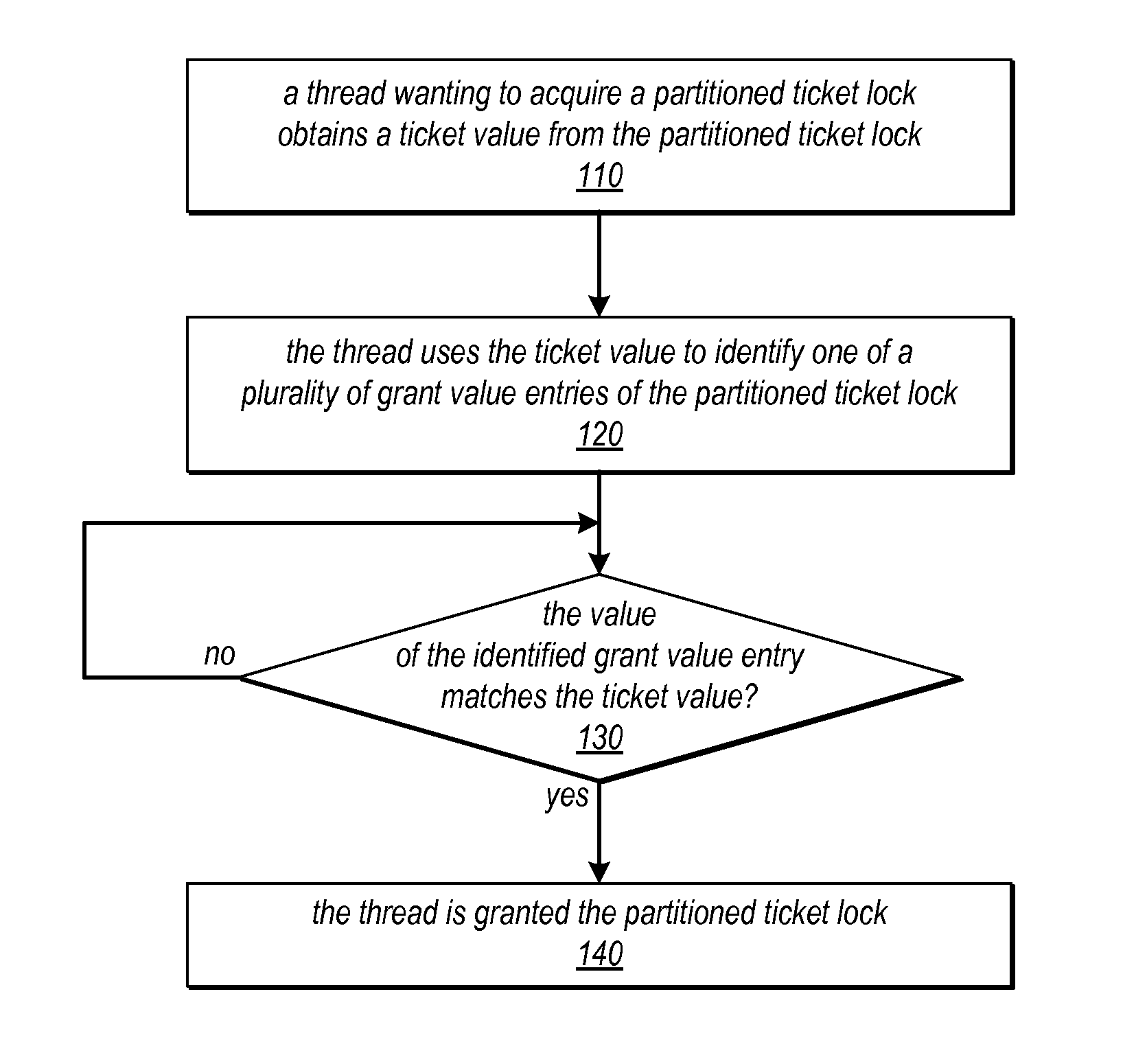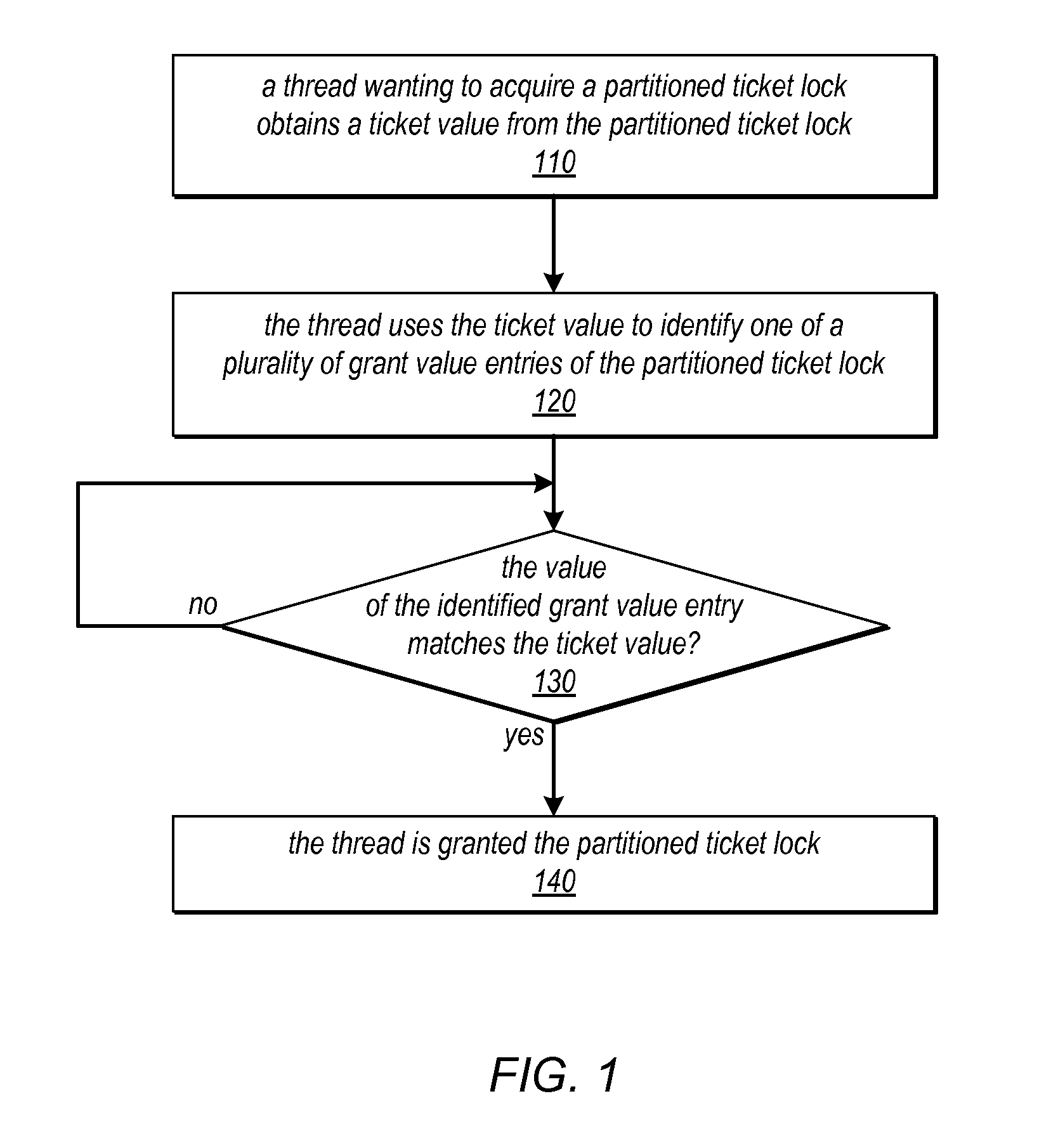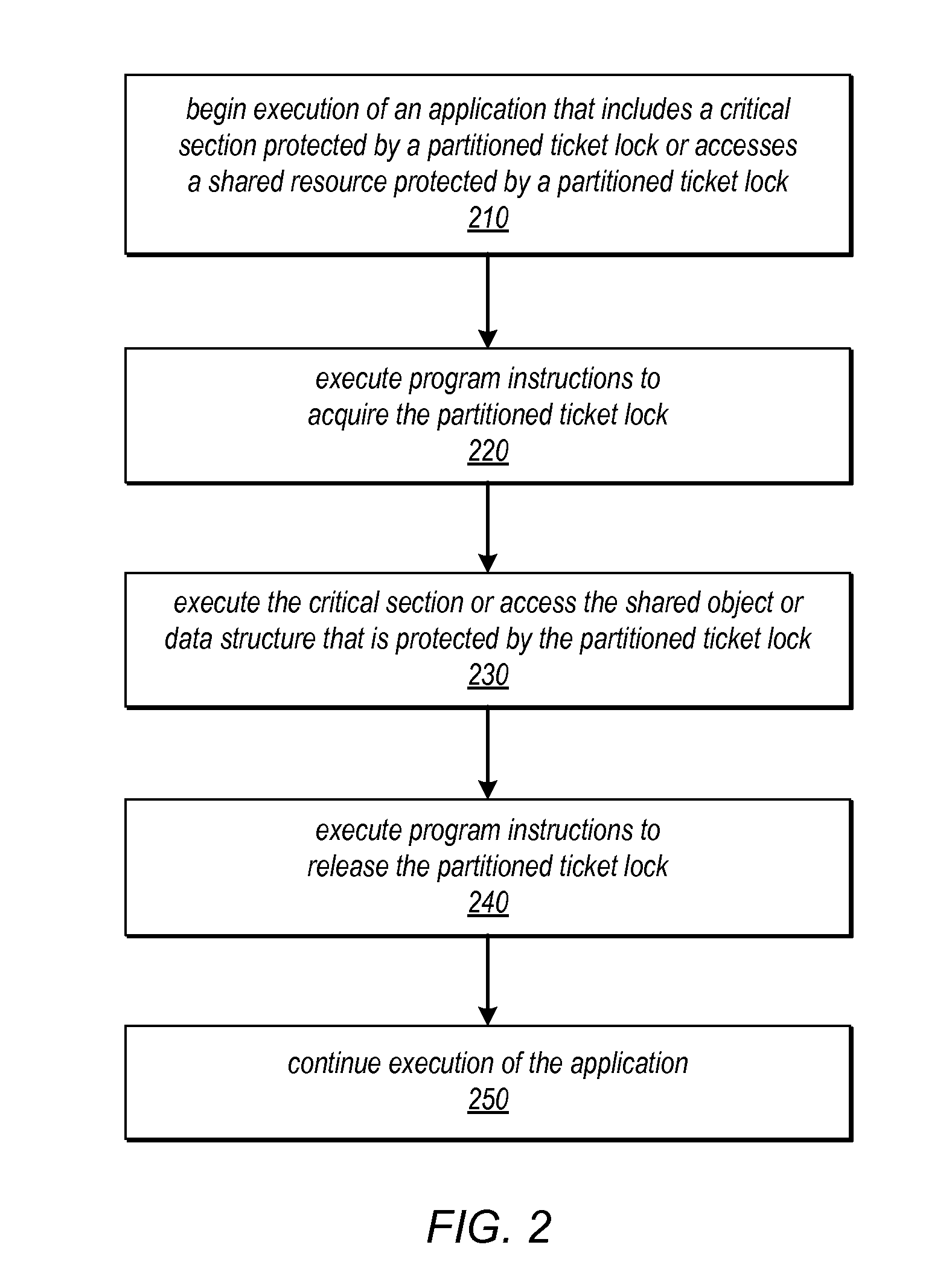Partitioned Ticket Locks With Semi-Local Spinning
a ticket lock and semi-local technology, applied in the direction of multi-programming arrangements, program control, instruments, etc., can solve the problems of simple spin locks not providing fifo (first-in-first-out) ordering, significant cache coherence traffic, and impairing the performance of a system
- Summary
- Abstract
- Description
- Claims
- Application Information
AI Technical Summary
Benefits of technology
Problems solved by technology
Method used
Image
Examples
Embodiment Construction
[0019]As noted above, various types of locks may provide mechanisms for accessing shared resources for thread-safe concurrent programming in a multiprocessor environment. For example, locks may be used to protect shared objects or data structures that are accessed by a critical section of code. In some embodiments, the systems and methods described herein for implementing and using a partitioned ticket lock may provide semi-local spinning and strict FIFO ordering, while allowing developers to strike an appropriate balance between memory contention and the space required to implement the partitioned ticket lock.
[0020]As described in more detail below, a partitioned ticket lock may in various embodiments include a single ticket field (or “Request” variable) whose value may be referred to herein as its “ticket value”, and multiple grant fields (or grant variables). For example, the partitioned ticket lock may include an array comprising multiple “grant value” entries, or “slots”. In so...
PUM
 Login to View More
Login to View More Abstract
Description
Claims
Application Information
 Login to View More
Login to View More - R&D
- Intellectual Property
- Life Sciences
- Materials
- Tech Scout
- Unparalleled Data Quality
- Higher Quality Content
- 60% Fewer Hallucinations
Browse by: Latest US Patents, China's latest patents, Technical Efficacy Thesaurus, Application Domain, Technology Topic, Popular Technical Reports.
© 2025 PatSnap. All rights reserved.Legal|Privacy policy|Modern Slavery Act Transparency Statement|Sitemap|About US| Contact US: help@patsnap.com



